Xcaret
[Previous: Boat Trip][Next:
Chichen-Itza]
We spent the day Wednesday, January 10th, at Xcaret, sort of a
combination of a water park, a zoo, and an ecological preserve. When we first
arrived, we went on an "ecological tour", where a guide showed us around and
explained how they take care of sea turtles there:
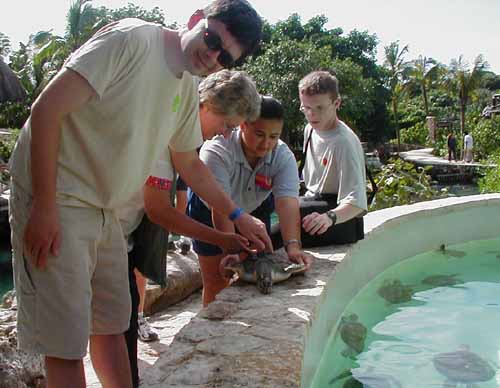

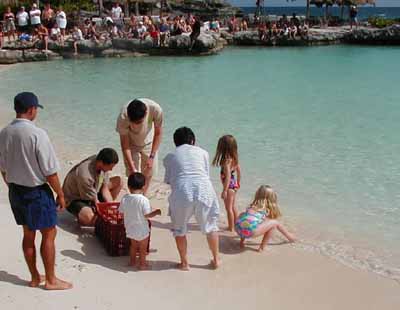
They have a ceremony when they release a new sea turtle into the wild.
They also have an underground river. It takes about 45 minutes
to float down the whole thing.
Here's what the entrance looks like:

Joel and I paid a little extra, and went on a boat tour to the
coral reef to go snorkeling:

|
 |
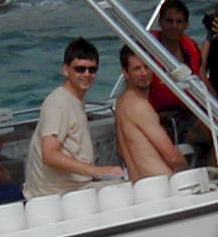
(Detail)
Matthew and Joel leaving for
the coral reef |
While we were gone, Dad & Mom stayed and looked at the
wildlife

 |
 |

|

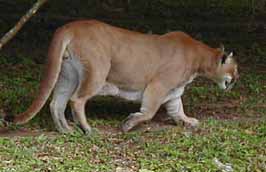
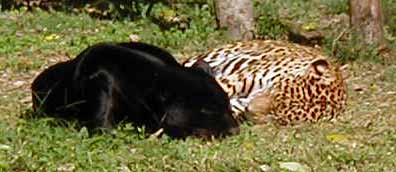
|
|
| The Xcaret archaelogical zone is one of the many
pre-Spanish settlements along this region's coast. THe meaning of the
name Xcaret is unknown, but in pre-Spanish and colonial times the site
was known as Pole'. The major groups of building are scattered about
coastwise, some within the walling, others outside it, and still
others up against it. Rather than a protective city wall, it is more
like a partition for a given areas. The earliest evidence of human
settlement is Xcaret goes back to the Lat Pre-Classic (0-250 A.D.) and
consists of sherds and a number of low platforms. By then, there were
fishing and farming villages along the coast. Traces from the Classic,
which include remains of major buildings, show well-defined social
divisions and a thriving trade with the Guatemalan highlands and close
trade ties with northern Yucata'n. Many of the buildings from this
period were later enlarged and revamped for their re-utilization. Yet
it is in the Post-Classic (1000-1550 A.D.) when Xcaret grows and comes
to the fore, as other shorline sites, thanks mainly to its sea
resources and coasting trade route around the peninsula and down to
Honduras. Its location across from Cozumel made Pole' into the
foremost port of embarkation fro crowds of pilgrims who crossed over
to the island in canoes to visit the famous shrine of the goddess
Ixchel. It is hard to tell Xcaret's town limits, since there are any
number of low stone walls and dwellings which form an unbroken network
along the whole coast. During the early colonial years, it continued
to be the port for going to and return from Cozumel. The ruins of a
sixteenth-century chapel are witnesses of this period. |
From a posted sign
|


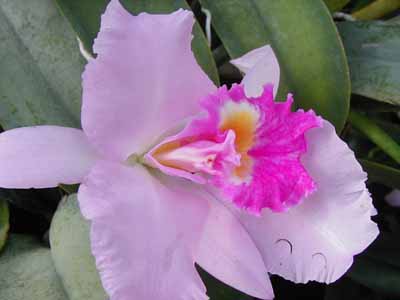
We stayed for the evening and nighttime shows. They
demonstrated
a Mayan ball game (at least as close as anyone's guess is about how they
played):
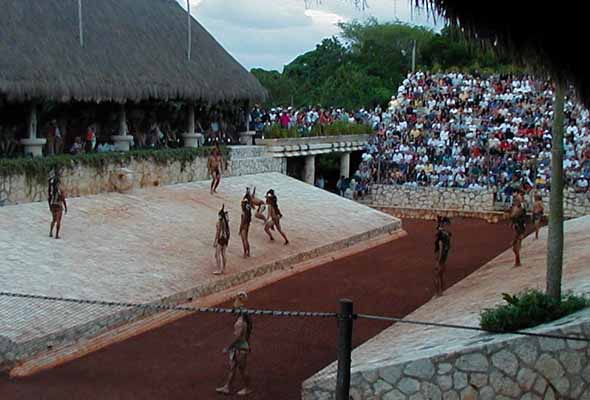
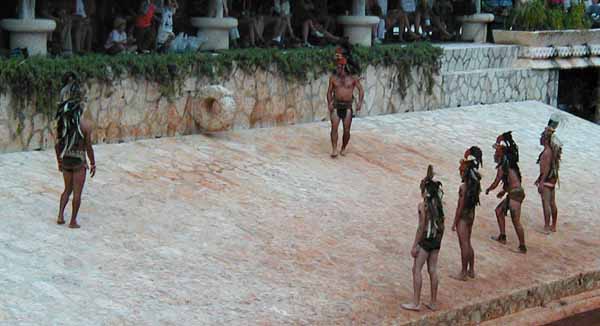
They demonstrated some dances, too:
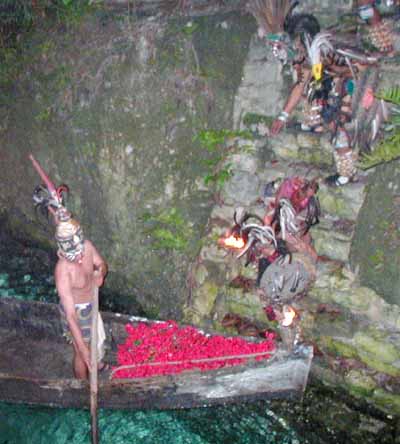
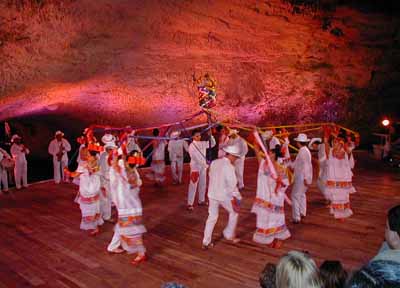
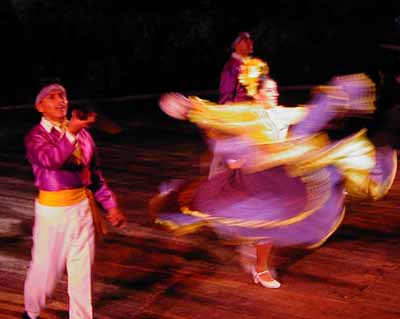
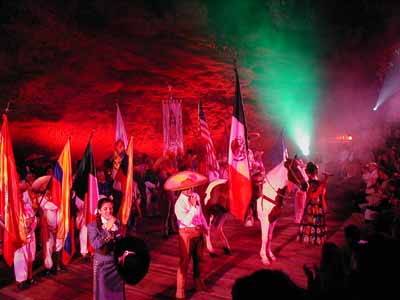

[Previous: Boat Trip][Next:
Chichen-Itza]

Created and maintained by Matthew Weathers.
Last updated Dec 27, 2002.




















![]()
![]()